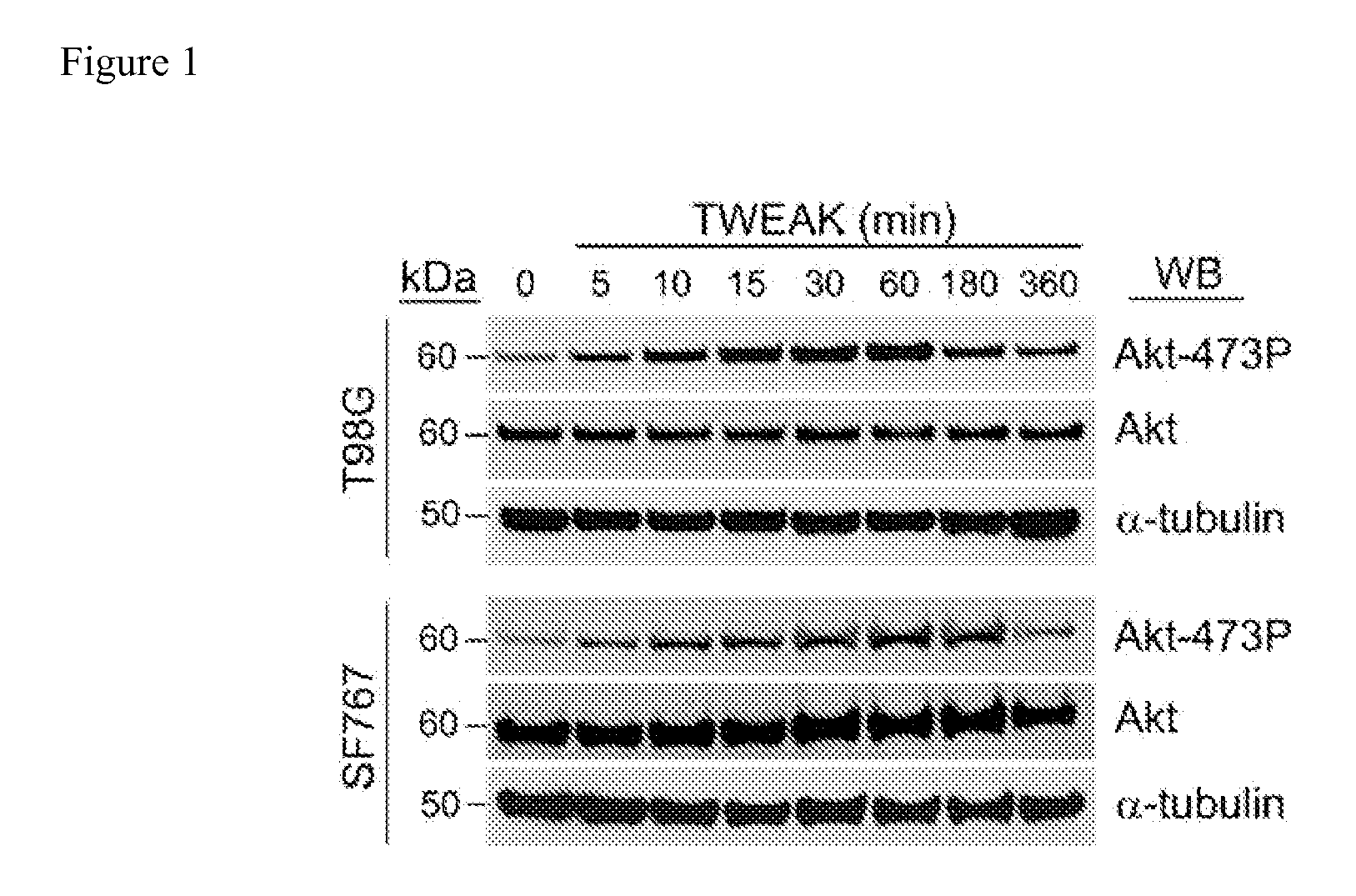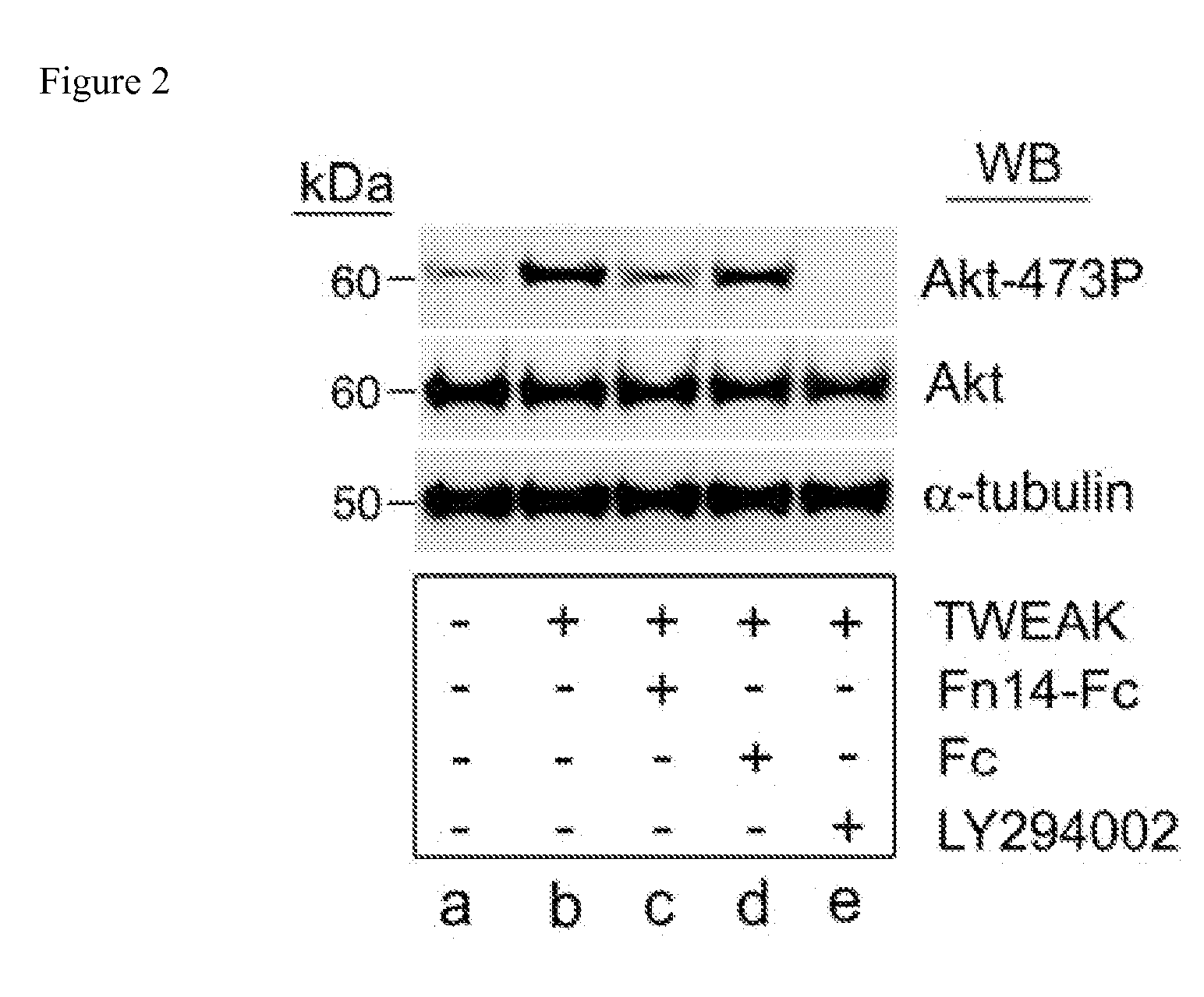Methods and kits used in identifying glioblastoma
a technology for identifying glioblastoma and glioblastoma cells, which is applied in the direction of fluorescence/phosphorescence, drug composition, biological material analysis, etc., can solve the problems of disappointing clinical outcome and ineffective tumor resection
- Summary
- Abstract
- Description
- Claims
- Application Information
AI Technical Summary
Benefits of technology
Problems solved by technology
Method used
Image
Examples
example
[0119]Elements and acts in the example are intended to illustrate the invention for the sake of simplicity and have not necessarily been rendered according to any particular sequence or embodiment. The example is also intended to establish possession of the invention by the Inventors.
[0120]The tumor necrosis factor (TNF) ligand superfamily and their cognate receptors are involved in the regulation of various cellular responses including proliferation, differentiation, and apoptosis (See Reference 6). Of interest, TWEAK and its receptor Fn14 are members of the TNF and TNFR superfamilies, respectively, and TWEAK-Fn14 axis signaling has been implicated in cancer progression and survival (See Reference 7). It has been reported that Fn14 mRNA expression is up-regulated in migration-stimulated glioma cells in vitro and invading cells in vivo (See References 8 and 9). Across tumor grades, Fn14 is most significantly overexpressed in GBM tissue, whereas in normal brain tissue the expression ...
PUM
| Property | Measurement | Unit |
|---|---|---|
| Time | aaaaa | aaaaa |
| Time | aaaaa | aaaaa |
| Time | aaaaa | aaaaa |
Abstract
Description
Claims
Application Information
 Login to View More
Login to View More - R&D
- Intellectual Property
- Life Sciences
- Materials
- Tech Scout
- Unparalleled Data Quality
- Higher Quality Content
- 60% Fewer Hallucinations
Browse by: Latest US Patents, China's latest patents, Technical Efficacy Thesaurus, Application Domain, Technology Topic, Popular Technical Reports.
© 2025 PatSnap. All rights reserved.Legal|Privacy policy|Modern Slavery Act Transparency Statement|Sitemap|About US| Contact US: help@patsnap.com



